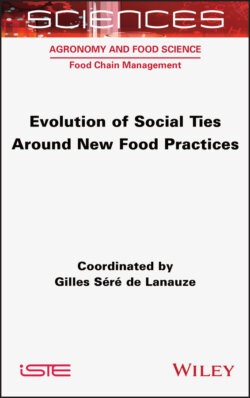Читать книгу Evolution of Social Ties around New Food Practices - Группа авторов - Страница 17
1.1. Introduction
ОглавлениеWhat is eating well? There are many answers to this seemingly simple question. First of all, we need to define what we mean by “eating well”. Historically, the issue of health through food was, quite obviously, mainly dealt with by nutritionists, who had an almost exclusively metabolic and physiological approach to nutrition. This led to campaigns promoting a balanced diet, making individuals aware of the nature of the foods to be consumed according to their category (carbohydrates, fibers, proteins, etc.). This functional vision of food prevailed in France until the 1960s and was perpetuated in English-speaking countries, but the book Manger: Français, Européens et Américains face à l’alimentation (Fischler and Masson 2008) shows how, contrary to this vision, the French preferred to conceive food another way. Today, nutritionists are increasingly interested in the issues of social relations around food and highlight that they are determining factors in a balanced diet. Therefore, eating well does not only depend on what we eat, it is also taking the time to sit down, in the company of people who allow us to enjoy a good time. It is also about sharing a dish, about a family meal established at well-defined times. This change can be seen in the recommendations that are made and the French National Nutrition and Health Plan (Plan National Nutrition Santé, PNNS). “Eat and Move” campaign devotes an entire section to this dimension. Thus, eating together is now part of the promotion of eating well, which is no longer just a balanced diet, but an “art of living”. Eating together helps in regulating food intake and invites people to cook more and to take more time to eat, which in turn helps in better perceiving the signals of satiation. As mentioned above, this “art of living” is particularly central to French culture, whereas English-speaking societies have retained a vision that is focused on the nutritional characteristics of food.
In the context of this book, which asks the question “Can we still eat together?”, this chapter is therefore not about all the recommendations of the PNNS but about a specific recommendation: eating together.
Eating together underlines the PNNS’s concerns, as will be detailed in section 1.2. However, this recommendation is not supported by the PNNS. In order to better support these practices of eating together, it is therefore necessary to better understand them and to question the conditions of their implementation. To do this, we adopt a practice-based approach in this chapter to understand how individuals eat together: a qualitative study conducted with 23 participants is presented in section 1.3. Section 1.4 more specifically addresses the questions “what are the materials, skills and meanings associated with these practices?” Section 1.5 focuses on the interactions between these three elements – materials, necessary skills and associated meanings – to show that together they can give rise to particular practices or help overcome obstacles to eating together. On this basis, in section 1.6, we examine the links between eating together and well-being, and in section 1.7, we open up perspectives for accompanying or facilitating eating together practices.
